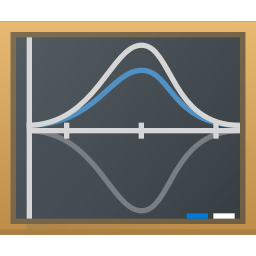Did you know that you can work with Jupyter notebooks directly in LabPlot?
For example, let’s open the following notebook to see how it works in #labplot
👉 https://github.com/demotu/BMC/blob/master/notebooks/Statistics-Descriptive.ipynb
#DataAnalysis #DataScience #Data #DataViz #Visualization #Plotting #Science #Statistics #FOSS #OpenSource #Python #Jupyter


I just looked at the documentation and saw that LabPlot only supports Python 2.x, which makes it entirely uninteresting to me.
I’d love to see support for current Python versions, including following new releases, which might be easier to achieve with 3.x.
But I know this kind of things is a lot of work to get started, so I won’t blame anyone for not doing this ;-)
@silmaril actually we support Python3 only and the documentation is probably outdated. Where did you read pyrhon2?
In the help you get when pressing F1 inside LabPlot: https://docs.kde.org/stable5/en/labplot/labplot2/CASworksheet.html
But it’s great to hear this info is wrong!
I just tried this in LabPlot:
and the result was
3.11.9 (main, Nov 10 2011, 15:00:00) [GCC 13.2.0]BTW: What does “CAS” stand for?
@silmaril
“CAS” generally stands for a “Computer Algebra System”. It encompasses statistical packages and programming languages like #Maxima, #Octave, #R, #Scilab, #Sage, #KAlgebra, #Qalculate!, #Python, #Julia, #Lua. You can use them all concurrently in multiple #LabPlot’s notebooks.
Please, see the attached screenshot. In this case, Python 3.12.3 is available in LabPlot on a Ubuntu machine.
@silmaril
Have you seen our video tutorial on how to use Computational Notebooks in #LabPlot? We used #R as a model case but it applies to all available computational engines (#Python, #Julia, #Maxima, #Octave and many others).
https://www.youtube.com/watch?v=8lDQStVDevw
And while we’re at it: How does LabPlot decide which python version to use?
On my Linux system, there is no
pythonandpython3points to Python 3.10.12.LabPlot uses Python 3.11.9 and Python 3.12.2 is also installed.
Which mechanism is used by LabPlot to find the Python version to use? And (how) can I tweak it to make it use 3.12?
@silmaril it’s decided at build/compile time. LabPlot is using Cantor internally and when Cantor is being built, the shared libraries of Python that are found in the labrary path are used and linked to. This basically fixes the version of Python used in labplot/cantor.
Does this mean that as a user of the binary build, I have to install the correct Python version to be used by LabPlot / Cantor on my machine? And the current version will need Python 3.11.x and won’t work if Python 3.12.x is the only version installed?
How can I determine the required Python version from LabPlot in case it’s not already installed?
@silmaril this is correct at the moment. Clearly, this not what people want to have usually and we need to change this.
To determine the required version, you can check the dependencies of executable ‘cantor_pyrhonserver’ on Linux either in your package manager or with ldd. For windows we compile and ship everything and document the required version of python in our FAQ.
Would it be possible to display the Python version and/or it’s executable path in the CAS configuration dialog?
That’s where I would look for this information and it wouldn’t leave any potential for documentation not being up to date.
The FAQ currently states:
What is the “system version”?
On my system
python3 --versionreturnsPython 3.10.12, butprint(sys.version)in LabPlot returns3.11.9 (main, Nov 10 2011, 15:00:00) [GCC 13.2.0]The information about Python versions on Windows seems to be correct, but I would recommend to mention the LabPlot version we are talking about in the FAQ, since this will probably change in future versions.
@silmaril “system version” is the version that was used by your system/distribution to link cantor against. We’ll re-phrase this part to make it more clear until we have a better and more flexible solution in place.
Yes, showing the version should be possible in the settings dialog. We added this point to our TODO-list.